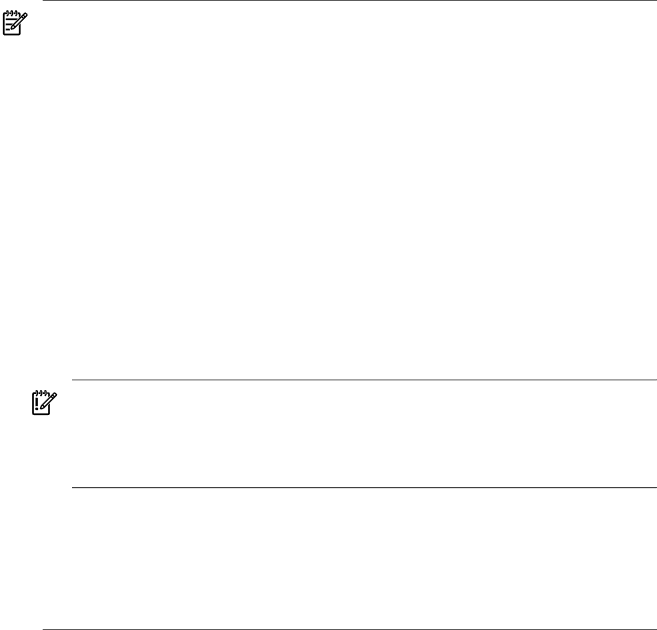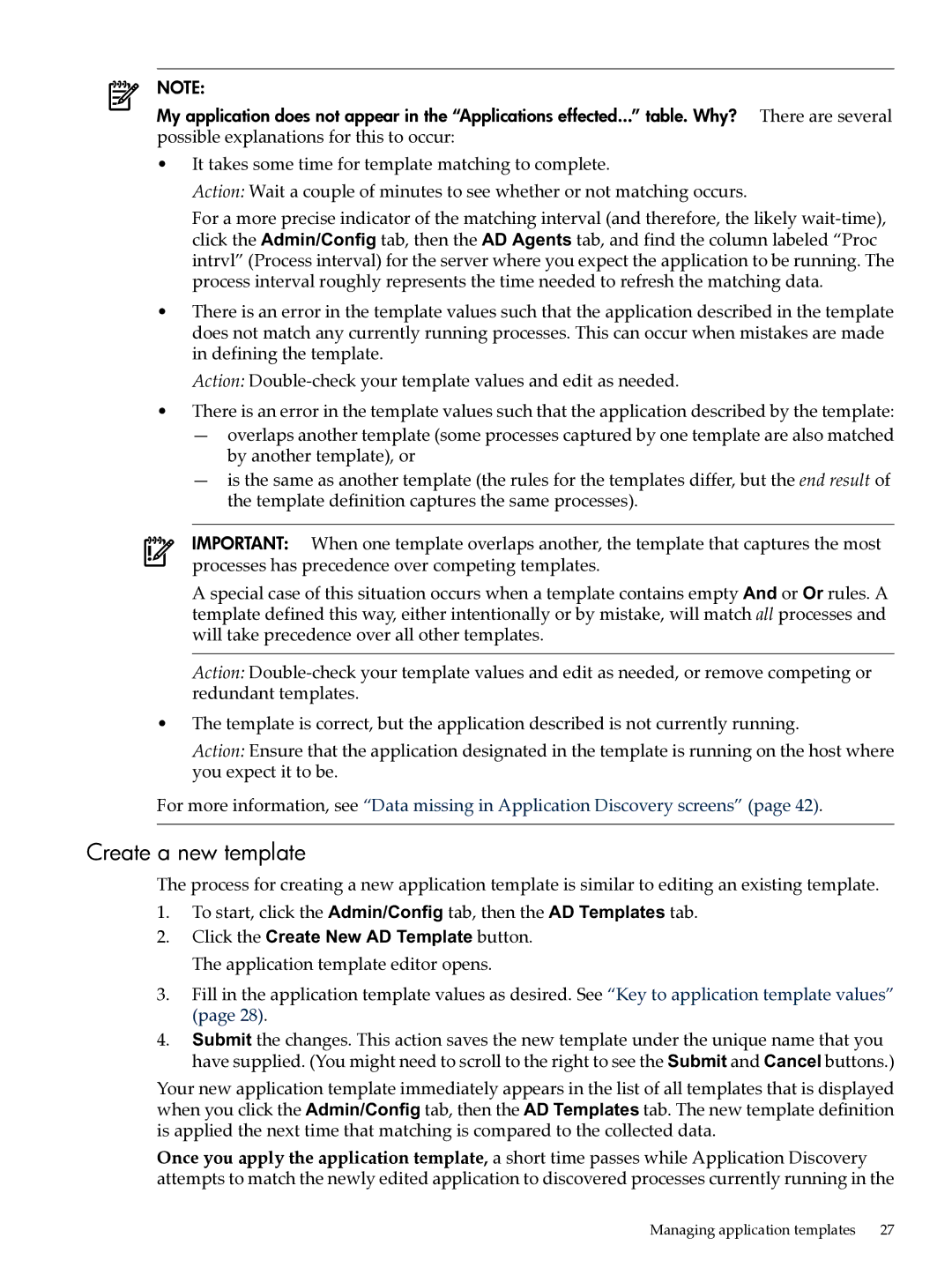
NOTE:
My application does not appear in the “Applications effected...” table. Why? There are several possible explanations for this to occur:
•It takes some time for template matching to complete.
Action: Wait a couple of minutes to see whether or not matching occurs.
For a more precise indicator of the matching interval (and therefore, the likely
•There is an error in the template values such that the application described in the template does not match any currently running processes. This can occur when mistakes are made in defining the template.
Action:
•There is an error in the template values such that the application described by the template:
—overlaps another template (some processes captured by one template are also matched by another template), or
—is the same as another template (the rules for the templates differ, but the end result of the template definition captures the same processes).
IMPORTANT: When one template overlaps another, the template that captures the most processes has precedence over competing templates.
A special case of this situation occurs when a template contains empty And or Or rules. A template defined this way, either intentionally or by mistake, will match all processes and will take precedence over all other templates.
Action:
•The template is correct, but the application described is not currently running.
Action: Ensure that the application designated in the template is running on the host where you expect it to be.
For more information, see “Data missing in Application Discovery screens” (page 42).
Create a new template
The process for creating a new application template is similar to editing an existing template.
1.To start, click the Admin/Config tab, then the AD Templates tab.
2.Click the Create New AD Template button. The application template editor opens.
3.Fill in the application template values as desired. See “Key to application template values” (page 28).
4.Submit the changes. This action saves the new template under the unique name that you have supplied. (You might need to scroll to the right to see the Submit and Cancel buttons.)
Your new application template immediately appears in the list of all templates that is displayed when you click the Admin/Config tab, then the AD Templates tab. The new template definition is applied the next time that matching is compared to the collected data.
Once you apply the application template, a short time passes while Application Discovery attempts to match the newly edited application to discovered processes currently running in the
Managing application templates 27
